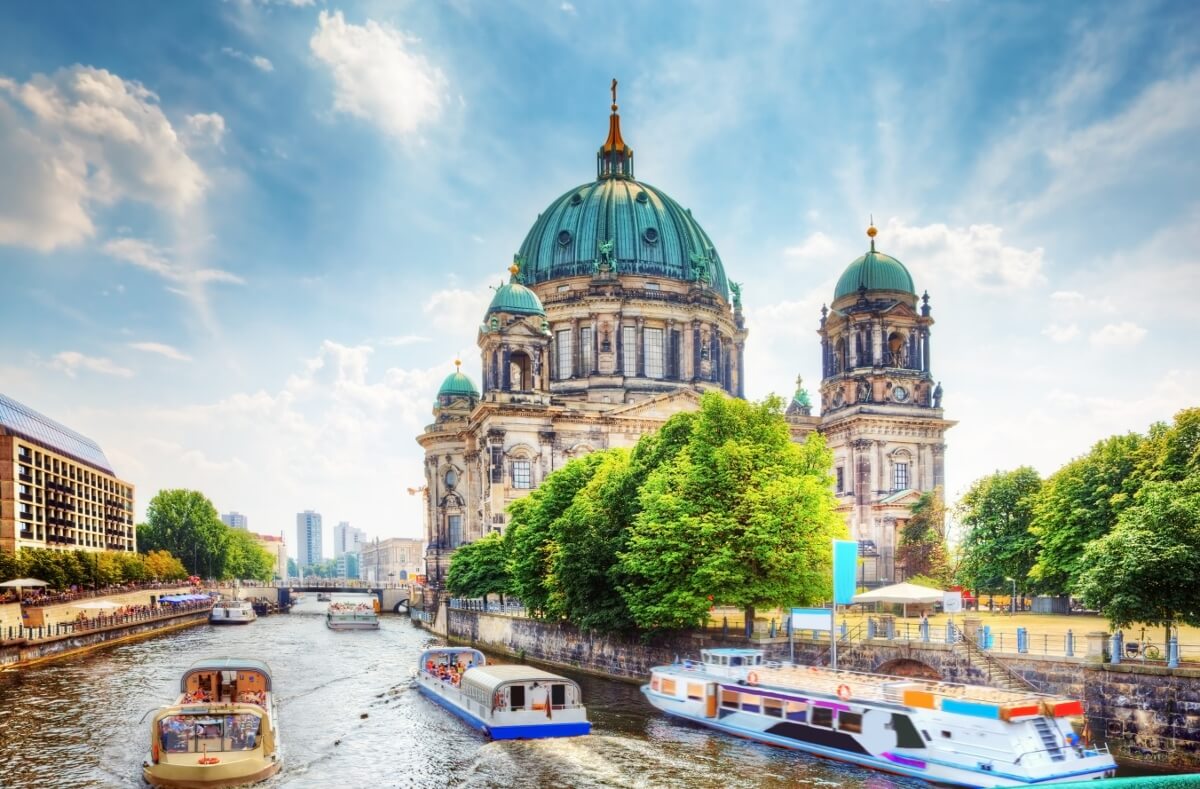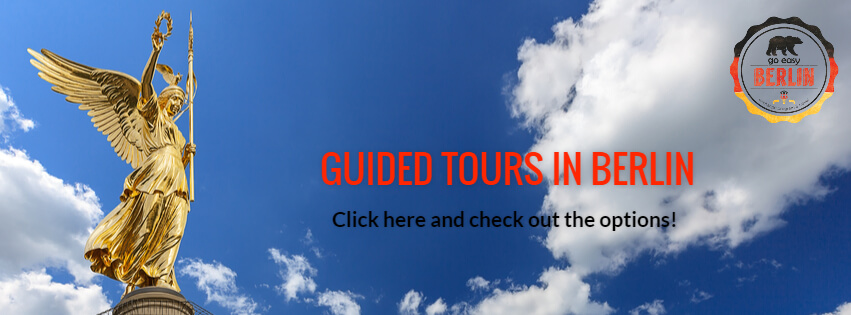
Siegessäule
2 de January de 2017
Livros para Todos
9 de January de 2017This is certainly one of Germany’s most imposing cathedrals, located on Museum Island, on the banks of the River Spree in Berlin. It is undoubtedly one of the obligatory points to put in your script and visit. This protestant church is located in the center in which the city of Berlin was founded, in the region formerly known as Cölln.
The history of the Cathedral of Berlin began in 1465, when the chapel of St. Erasmus in the royal palace was built to stature of the collegiate church. The German name for the Cathedral, “Dom”, can also be found with the term “Domkirche”, which was used for such high school churches at the time. In 1536, voter Joachim II changed the “Dom” to the old Dominican church, south of the palace.

With the support of Martin Luther, the elector established the Reformation in 1539, and the “Dom” became a Lutheran church. In 1608, the collegiate church was dissolved, and the Dom was declared the highest parish church in Cölln in the Spree. When voter Johann Sigismund converted to Calvinism in 1613, the cathedral became the court and parish church.
From 1747 to 1750, King Friedrich I commissioned Johann Boumann, the Elder, to build a new baroque building north of the city palace. After the coffins were transferred from the crypt, the old cathedral was dilapidated and placed below.
On the occasion of the union of the Lutheran and Reformed Prussian communities, the interior and exterior of the cathedral were renovated. The classical conversion of Karl Friedrich Schinkel was completed in 1822.
In 1893, after the demolition of the old cathedral, the foundations of the new structure were initiated. The central building, an Italian renaissance structure of baroque influence, was consecrated almost 11 years later, on February 27, 1905.
Flanked by four corner towers, 114 meters above street level, the interior and exterior of the Cathedral were ornamented with an extensive pictorial scheme illustrating the New Testament and the history of church reform. The construction of the cathedral cost DM 11,5 million.
According to the architects’ assessment, building a similar building today would require approximately 180 million euros. Criticism of the building began before the cathedral was completed and continues today. The cathedral is accused of being overly ostentatious, the expression of imperial “Byzantinism” and “spectacle.” Despite all these discussions, the cathedral has always met with many enthusiasts, who find the architecture edifying and festive. At the same time, it provides a place for quiet and prayer within the restless center of Berlin.
During the horror of World War II, a major damage to the cathedral was caused by an air strike in 1940, in which the building lost its altar windows. In 1944, the impact of a liquid incendiary bomb hit the foot of the dome flashlight. As access to this site was difficult, the fire could not be erased and the whole construction of the dome was destroyed. Parts of the burning dome fell in the church and down the floor, causing the fire to spill out into the crypt below.

Within one night, the cathedral had been turned into a ruin. Vandalism and depredations caused even more damage. The money for the necessary protection of the structural materials came slowly. The bells first played again after the end of the war in November 1948, and a temporary roof for the cathedral’s dome was built only in 1953. During this period, church services and music occurred in the crypt area below church.
With the financial support of the German Protestant Church and the government of the Federal Republic, reconstruction of the cathedral, still damaged by the war, began only in 1975. Construction work on the exterior facade of the cathedral – with extreme changes in the dome area – was essentially Completed in 1983. Work in the interior began in 1984.
On June 6, 1993, the Church was reopened in a ceremonial service. The windows in the main chapel and the mosaic paintings in the dome of the sermon church were rebuilt in the years that followed. On June 29, 2002, the last of the dome mosaics was festively inaugurated. The restored crypt of the Hohenzollern dynasty has been open to the public since 20 November 2002.
With its impressive structure, the cathedral is today one of the main attractions of the capital of Germany. The main entrance faces the Lustgarten, where you can appreciate the beautiful building, which, when viewed from the left, adds the enigmatic Fernsehturm in the background.
The east side of four floors, facing the River Spree, reminiscent of the architecture of a baroque palace and clearly shows the organization in three parts of the building. The north-west tower houses the bells, whose strong and intense sound summons people from near and far to prayer and worship.
Although the dome has not been rebuilt throughout its height after its destruction in WWII, it continues to dominate most of the surrounding buildings and is widely visible from many points throughout the city. The Berlin Cathedral is often referred to in the printed version of tourism as “Entrance to Museum Island”.
The view of the dome’s passage shows the wonderful location of Berlin’s Cathedral in the historic city center. Visitors climbing the 270 steps are rewarded with views of Museum Island, the Synagogue, Gendarmenmarkt, the Reichstag, and the Rotes Rathaus.
During the Festival of Lights, the cathedral is illuminated with several projections that fit perfectly with its statues, towers and dome. It’s a show, it’s worth checking, the festival takes place in October.
For those planning their trip to Berlin, there is an excellent option called “Berlin Pass”. This is a complete tour package with everything you need during a visit to the city. Once you have bought the Berlin Pass, you can relax knowing that everything you need to explore the city is included in this package, helping you to make the most of your time in Berlin. With a choice of more than 50 museums, monuments, galleries and attractions, there is something for all ages. For more information click here.
Did you enjoy the history of the Cathedral of Berlin? Tell us more about your experience in the German capital! 🙂
Source: http://www.berlinerdom.de/



